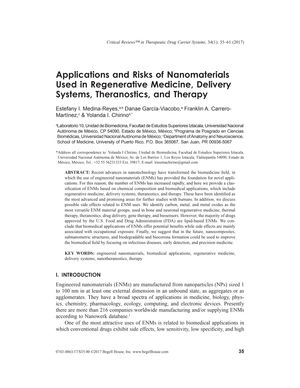Applications and Risks of Nanomaterials Used in Regenerative Medicine, Delivery Systems, Theranostics, and Therapy
January 2017
in “Critical Reviews in Therapeutic Drug Carrier Systems”

TLDR Nanomaterials in biomedicine can improve treatments but may have risks like toxicity, needing more safety research.
The 2017 document reviews the use of engineered nanomaterials (ENMs) in biomedicine, including regenerative medicine, drug delivery systems, theranostics, and therapy. It outlines the benefits of ENMs, such as improved drug therapeutic index and specificity, and categorizes them by chemical composition, including carbon-based, metal/metal oxide-based, and lipid-based nanoparticles, with the latter being the majority FDA-approved. The document also discusses the potential risks, such as toxicity, ROS production, and genotoxicity, associated with these materials. Quantum dots, dendrimers, and lipid-based nanoparticles like liposomes are highlighted for their applications in cancer treatment, drug delivery, and treatment of diseases like androgenetic alopecia, but also for their potential side effects. The document emphasizes the need for further research into the long-term effects and safety of ENMs, the development of predictive toxicity models, and the consideration of environmental and health effects due to their low excretion rates.
View this study on dl.begellhouse.com →